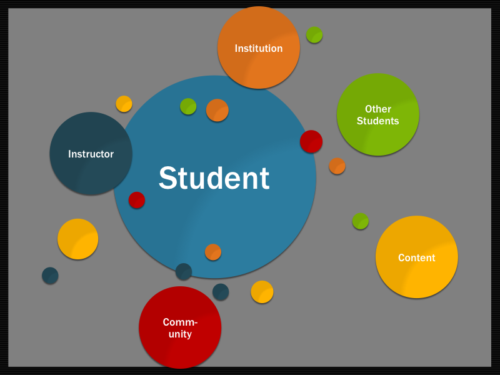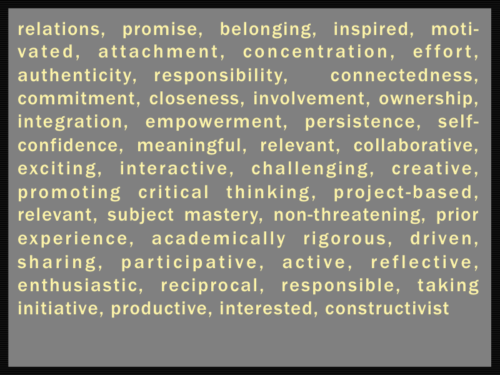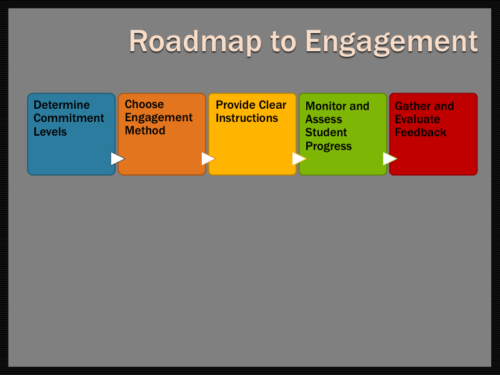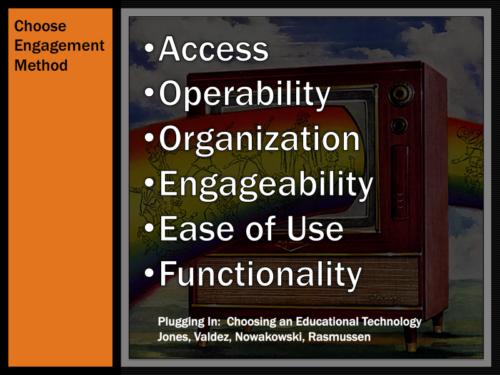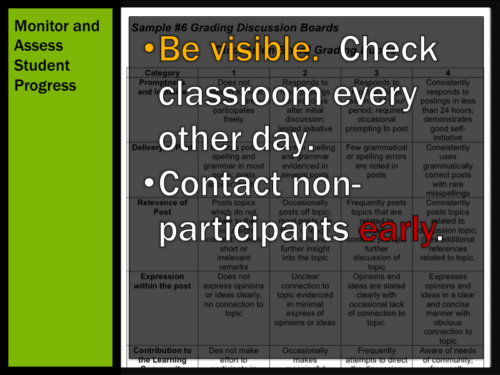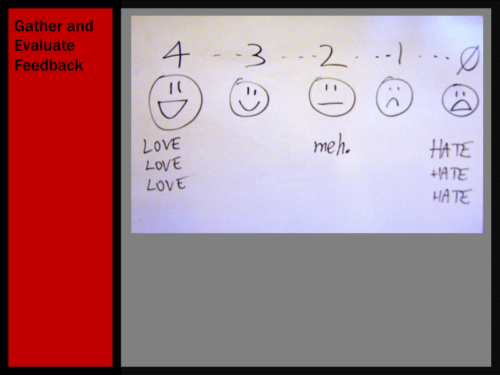This “engagement quilt” shows how members of an educational community contribute to student success.
In my opinion, successful students need to have experiences in three engagement areas:
- Content mastery
- Personal support
- Professional onboarding
Content mastery is the key player. Students have to master the key concepts in their respective fields to be successful on the job.
Personal support is also important. Students need to know when to get help, and where to turn for assistance. The assistance might involve academic tutoring, child care, help with taxes, or anything else that will help students quickly get through the business of living so they can devote more of their time and energy on their studies. It’s possible to refer to this need using the popular buzzword “work/life balance,” but I think that’s a misleading term because so many community college students don’t have a support foundation to build on, or resources to purchase the aid or services they need. Students need to invest time and resources building that foundation, and I’d like to see community colleges partnering with students build stronger foundations.
Professional onboarding is also critical. Students need to learn as much as possible about their potential careers before they get too far into their studies. We need to make sure students go on field trips, talk to industry professionals, read journals and magazines related to their fields, and engage in other activities that will help them cement their career choice (or help them successfully redirect their efforts!) and give them rich experiences that will foster in-class discussions and activities.
The orange stripes running across the patchwork graphic represent these three areas.
The vertical blue stripes represent different engagement players students need to interact with:
- The community
- The institution
- Instructors
- Other students
- The content (Content is highly important, so it’s a horizontal stripe and a vertical stripe!)
The intersecting squares are where the engagement activities and engagement players combine to create student experiences. The text in each square is a sample experience.
Interacting with the community will give students a better perspective on their role in society, within their family, and within their profession. Examples of community interactions include interviewing neighbors, participating in corporate-sponsored competitions, volunteering in the community, and building stronger relationships with family and friends.
Interacting with the college itself will give students a better understanding of the resources available to them, and will hopefully open avenues of thought that had not previously occurred to the student. The school could provide guest speakers, career fairs, career counseling, academic support services like a writing center, and student advising.
The instructors (our center stripe) are central to the process. Instructors can provide guiding hands, caring voices, critical feedback, and bridges to a career.
Other students are also resources. Interacting with other students allows students to develop workplace relationship skills, get peer feedback, and discover partners in the learning journey.
Lastly, interacting with the content gives students the knowledge they’ll need to be successful. Reading classroom documents like a syllabus gives them a framework for their progress in a course, and additionally might contain resources to help with their studies. Class assignments may also use workplace metrics for grading, which will give students advance knowledge of the challenges they’ll face on the job.
Other Slides
I liked the design I used for this presentation, so I’m throwing in a few more slides to showcase my PowerPoint skills.
Images on these slides were created by Sharon Huston, The Fanboy, billsoPHOTO, and RCA.

